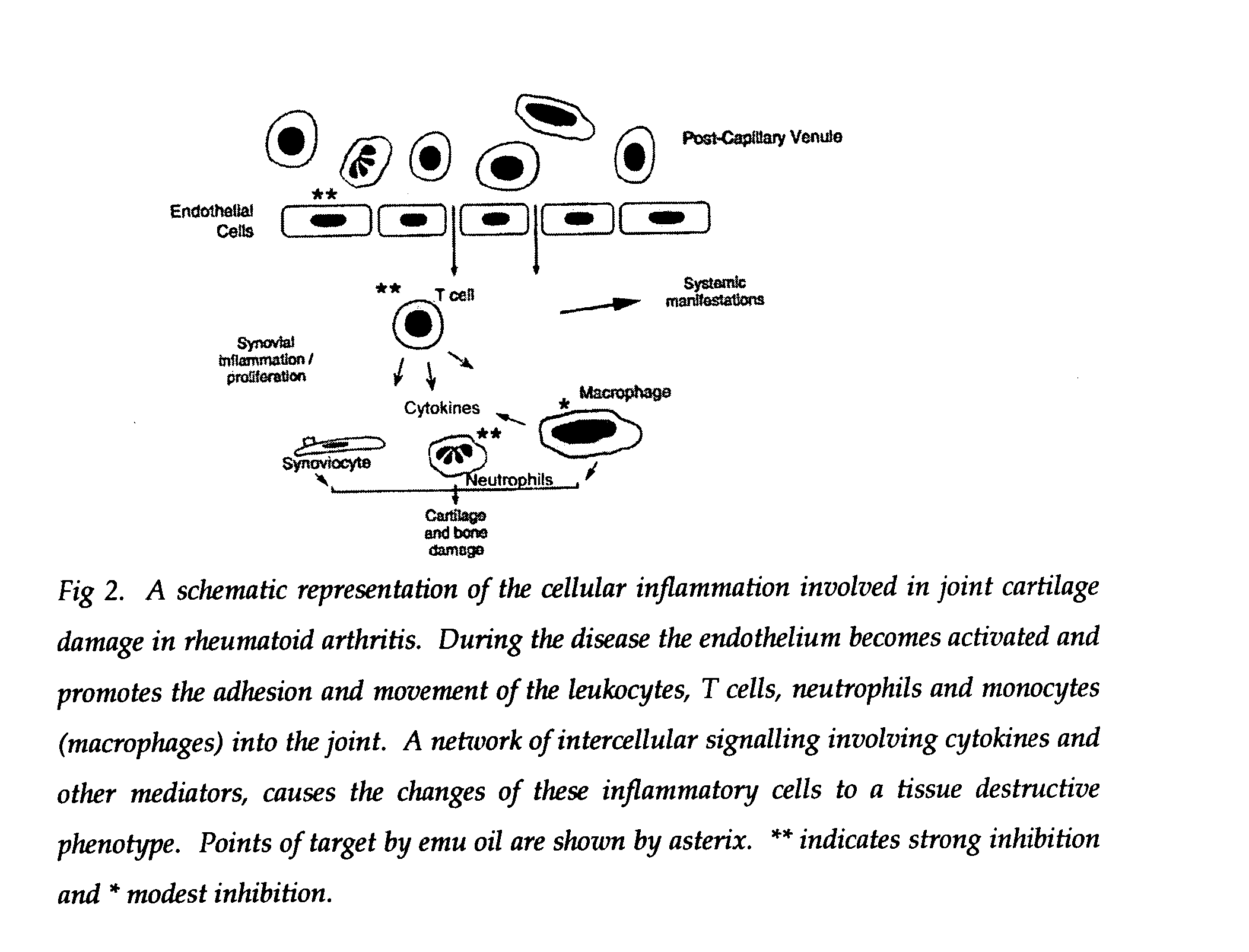Therapeutic properties of oils
a technology of therapeutic properties and oils, applied in the field of therapeutic properties of oils, can solve the problems of increasing the risk of disease, tissue damage, autoimmune and allergic inflammatory diseases, and remaining a major burden to the community, and achieve the effect of accurate determination
- Summary
- Abstract
- Description
- Claims
- Application Information
AI Technical Summary
Benefits of technology
Problems solved by technology
Method used
Image
Examples
Embodiment Construction
[0055] The active ingredient(s) in emu oil that is (are) responsible for the reported anti-inflammatory activity has (have) not been identified. Emu oil is composed mainly of triglycerides that contain varying amounts of fatty acids (Table 1). The limited available data on the composition of emu oil suggest that the clear oil can vary markedly in terms of anti-oxidants (carotenoids, flavonoids), skin permeation-enhancing factors and α-linolenic acid (18:3ω3) (from 0-20%) (4) content. The finding that the oil is not rich in ω3 fatty acids makes it unlikely that the anti-inflammatory effect of the oil is related to ω3 fatty acids, which are widely perceived as having anti-inflammatory actions. A previous study has reported, as unpublished results, that the efficacy of emu oil as an anti-inflammatory agent did not correlate with ω3 fatty acid content (0.2-19.7%) of the oil (4).
TABLE 1Fatty acid composition of emu oilCOMPONENTAMOUNTOleic acid (18:1ω9)47-58%Palmitic acid (16:0)19-24%St...
PUM
| Property | Measurement | Unit |
|---|---|---|
| temperature | aaaaa | aaaaa |
| temperature | aaaaa | aaaaa |
| temperature | aaaaa | aaaaa |
Abstract
Description
Claims
Application Information
 Login to View More
Login to View More - R&D
- Intellectual Property
- Life Sciences
- Materials
- Tech Scout
- Unparalleled Data Quality
- Higher Quality Content
- 60% Fewer Hallucinations
Browse by: Latest US Patents, China's latest patents, Technical Efficacy Thesaurus, Application Domain, Technology Topic, Popular Technical Reports.
© 2025 PatSnap. All rights reserved.Legal|Privacy policy|Modern Slavery Act Transparency Statement|Sitemap|About US| Contact US: help@patsnap.com



